Abstract
The most widely used indicator of the sanitary quality of recreational waters is the coliform group of bacteria. Present techniques of coliform enumeration are imprecise, and this fact is too often overlooked in routine water quality surveys as well as in research efforts seeking quantitative relationships between coliform density and the health effects of recreational waters. To illustrate this point, three years of data gathered by the New York City Department of Health as part of their routine beach water sampling programme were re-analysed, taking the limited precision of each coliform estimate into account. Re-analysis showed 56.6% of the data were not significantly different (P greater than 0.05) from the standard being used. This large percentage of the data was of little value in determining the acceptability of the waters being sampled relative to the standard being used and thus represented a substantial waste of time and expense. Of the remaining data, half indicated acceptable water quality and half indicated unacceptable water quality relative to the standard. These three years of data, therefore, gave little information on the acceptability of the water quality at this location with respect to the standard being used. The data further suggest significant differences in coliform density within sample dates. It is recommended that in future water quality surveys, or in studies of the health effects of recreational waters as related to coliform density, emphasis should shift from maximizing the number of sample dates to maximizing the number of replicate determinations made per sample date.
Full text
PDF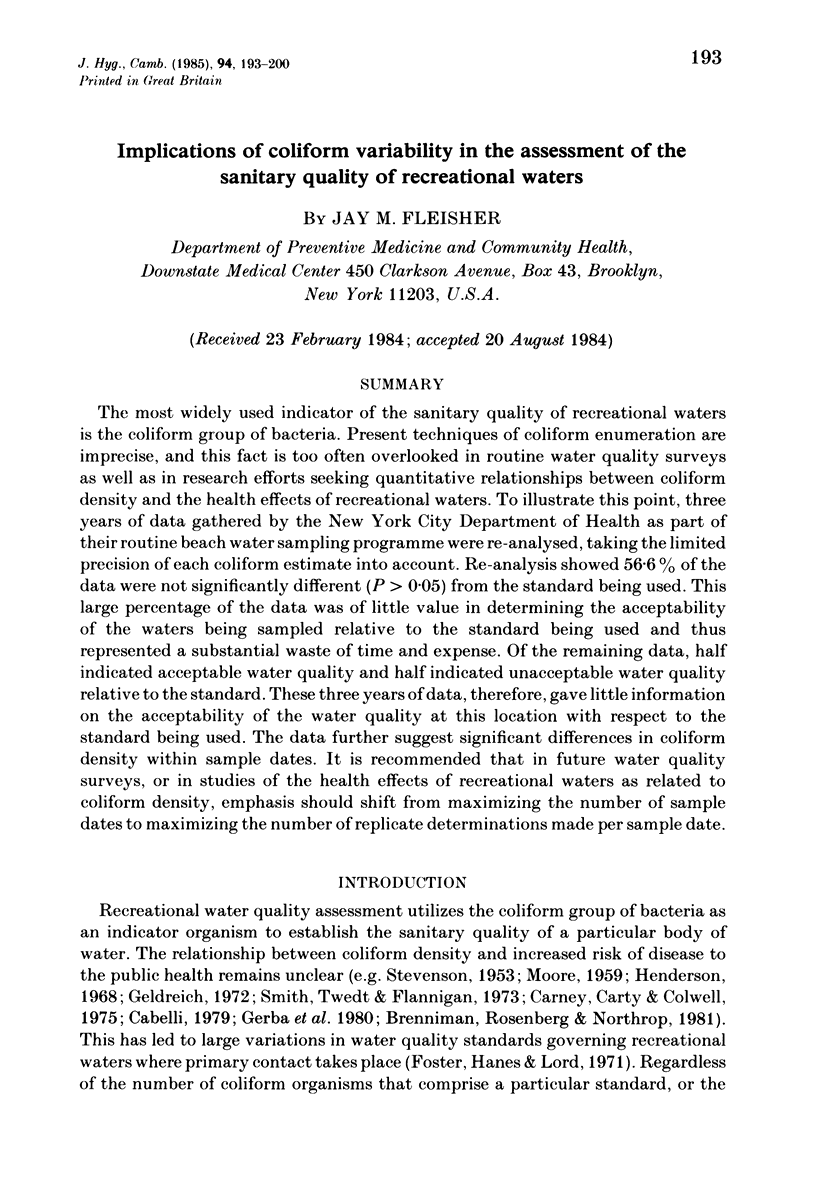
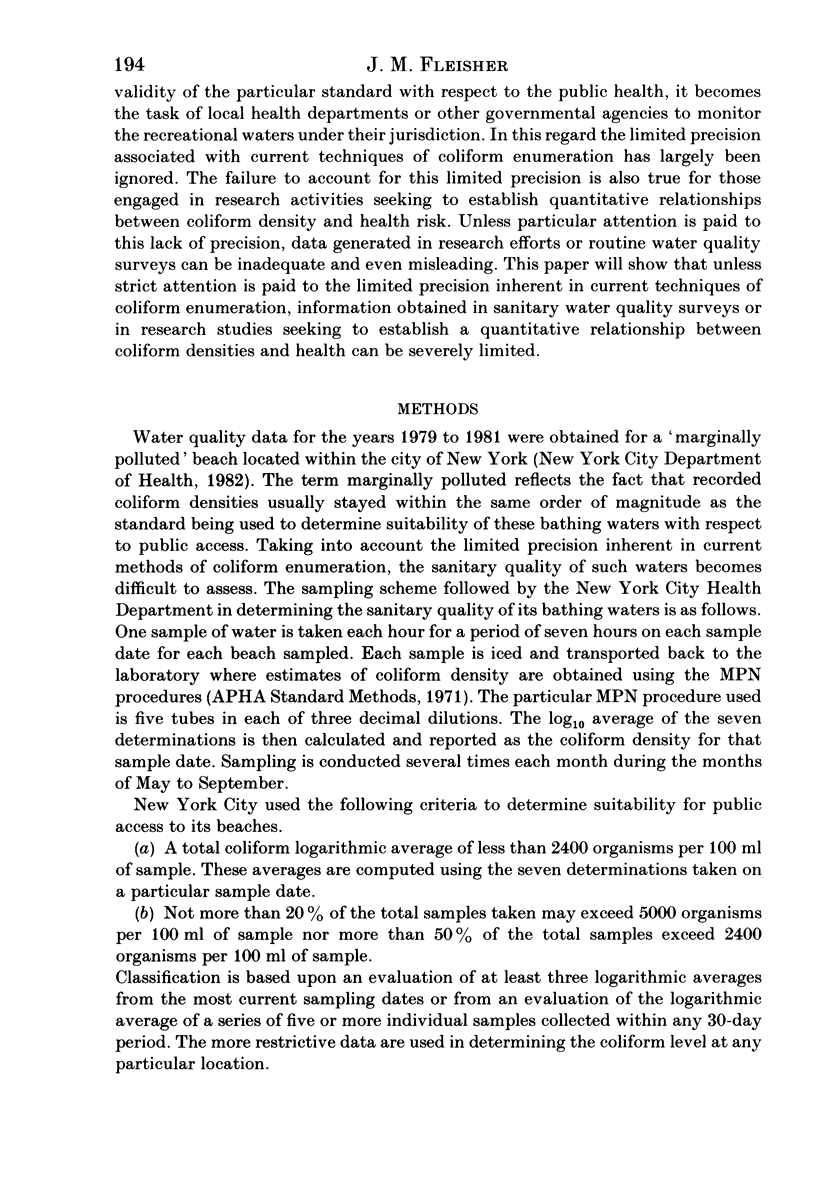
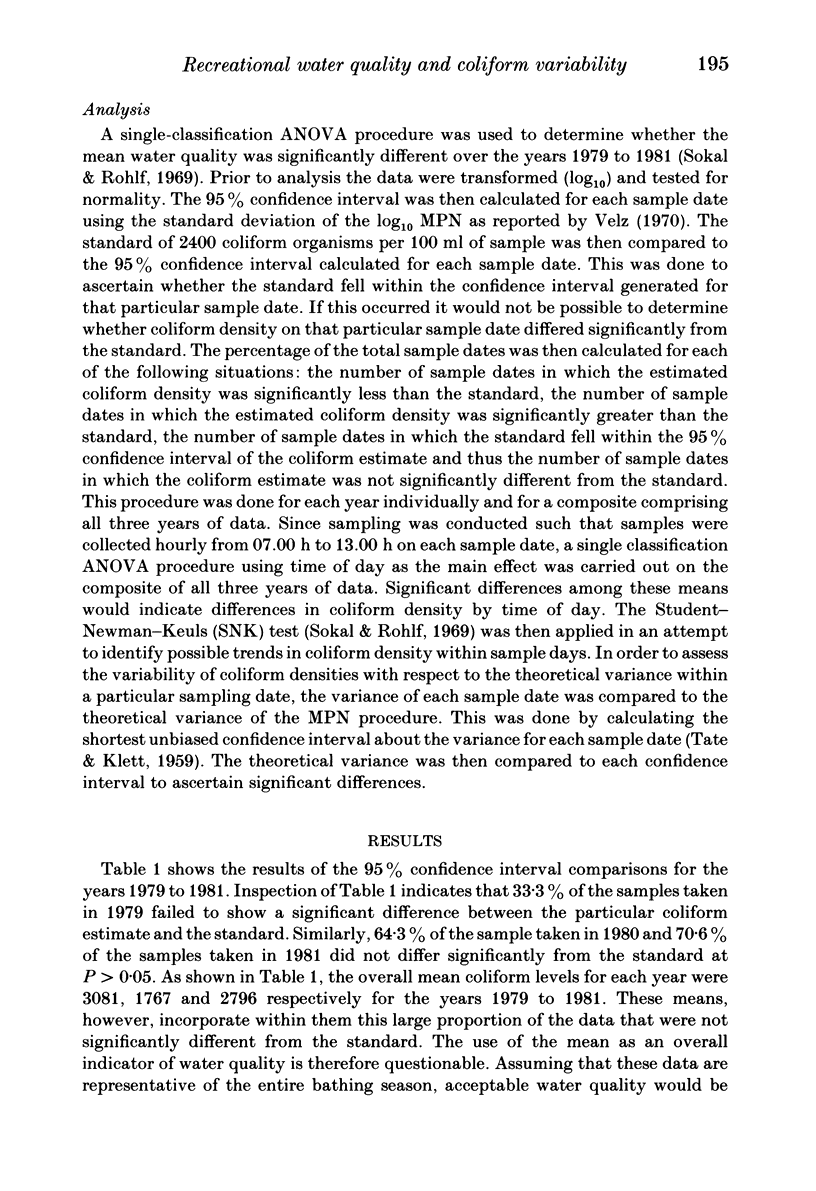
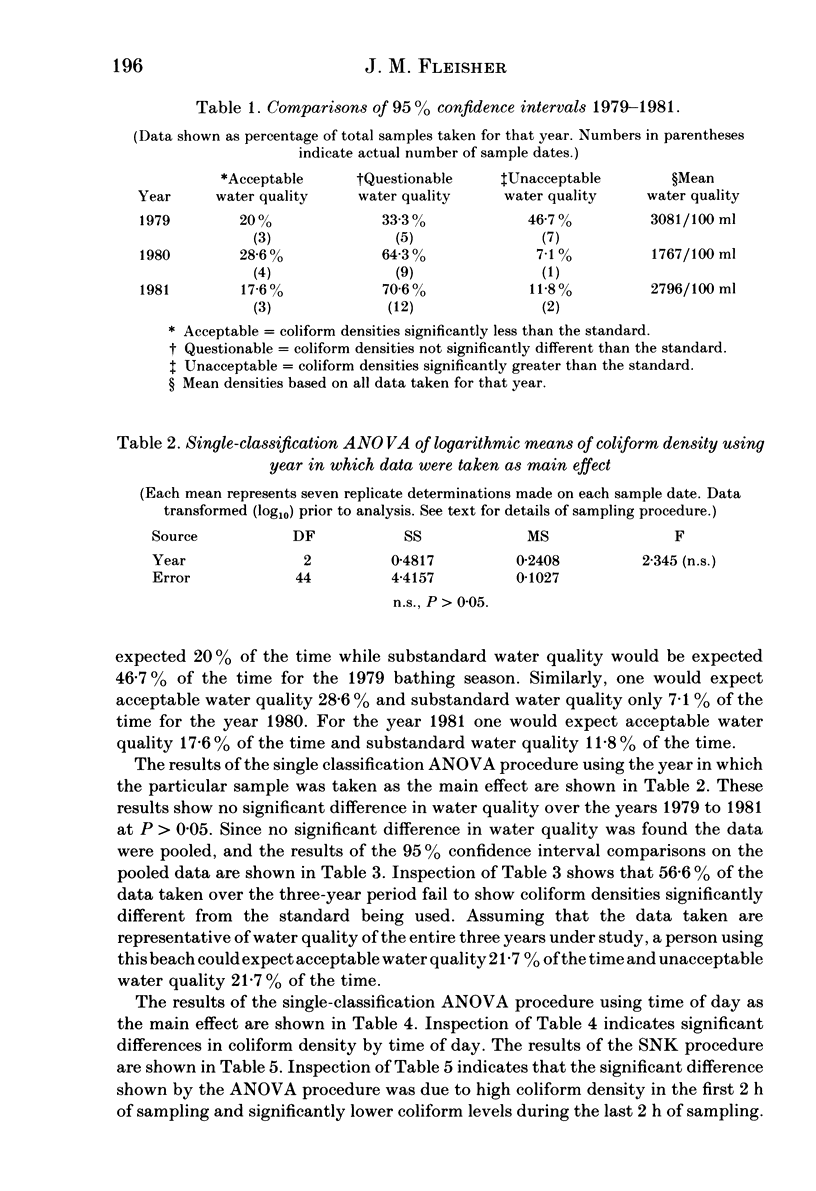
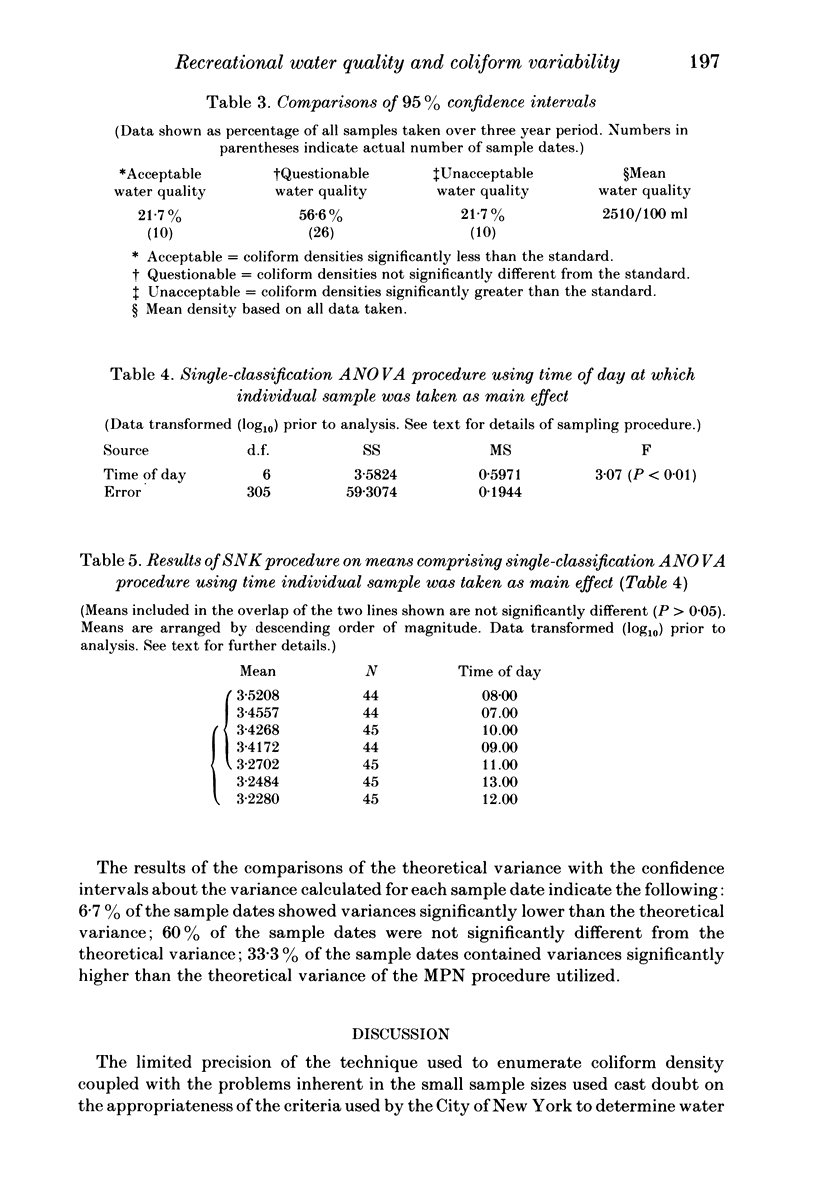
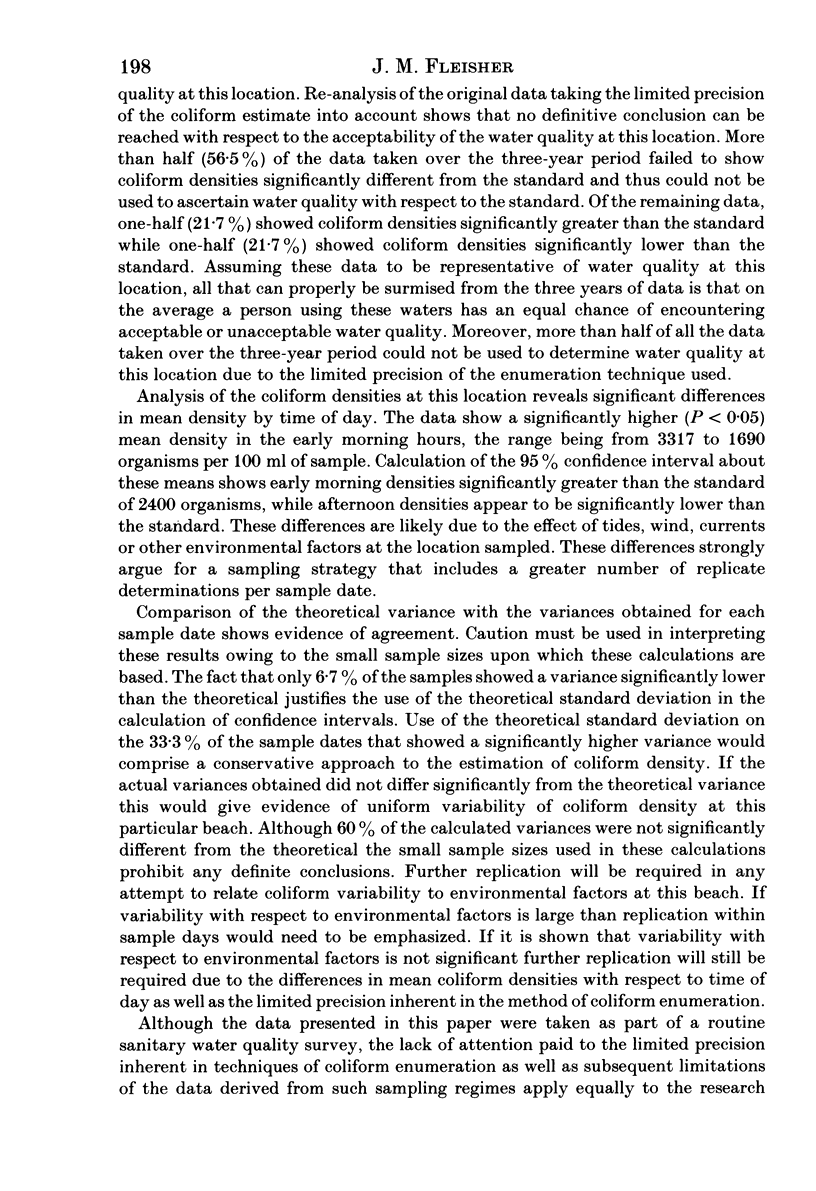
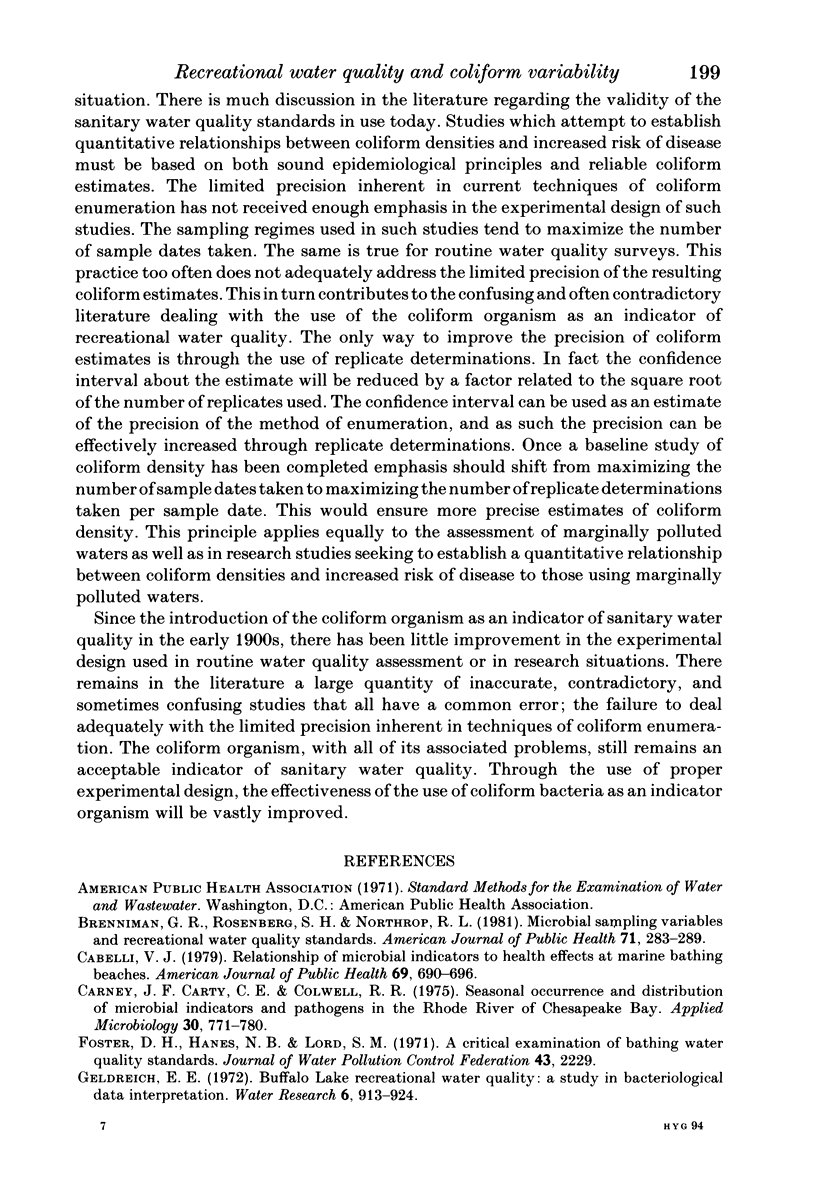
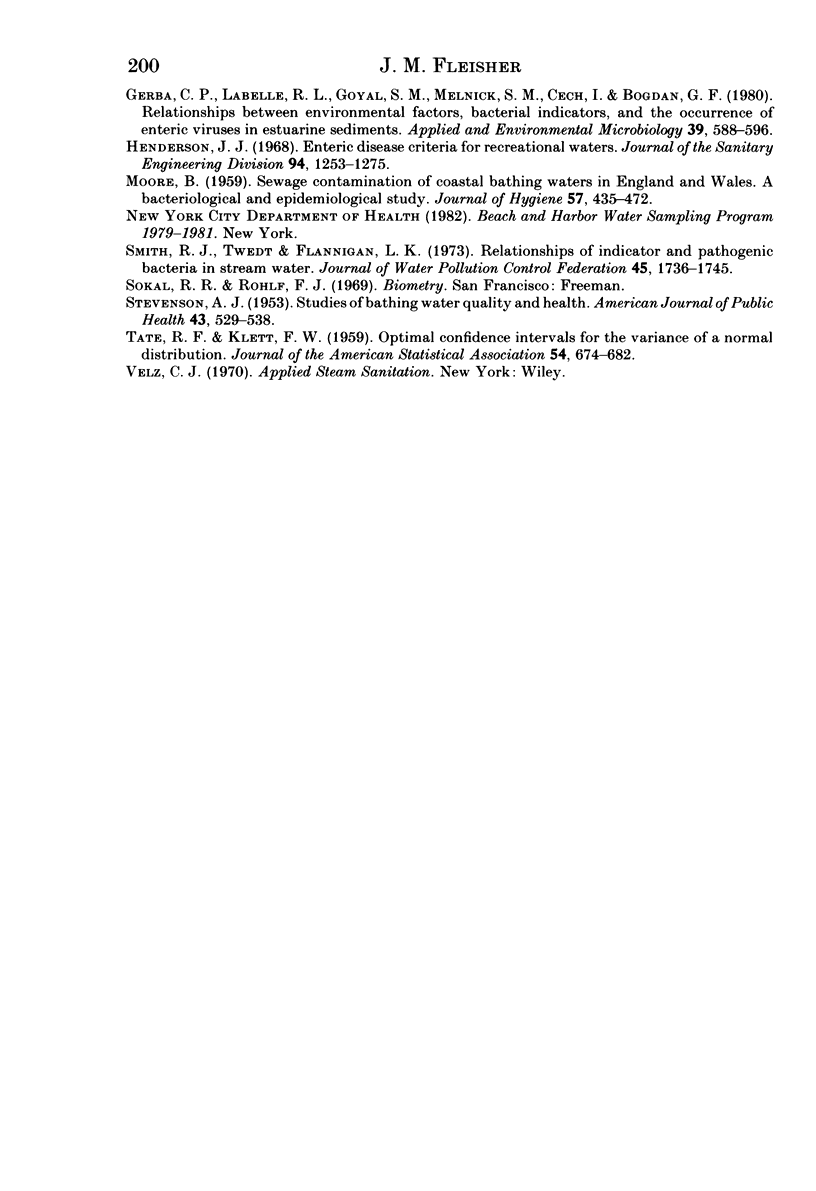
Selected References
These references are in PubMed. This may not be the complete list of references from this article.
- Brenniman G. R., Rosenberg S. H., Northrop R. L. Microbial sampling variables and recreational water quality standards. Am J Public Health. 1981 Mar;71(3):283–289. doi: 10.2105/ajph.71.3.283. [DOI] [PMC free article] [PubMed] [Google Scholar]
- Cabelli V. J., Dufour A. P., Levin M. A., McCabe L. J., Haberman P. W. Relationship of microbial indicators to health effects at marine bathing beaches. Am J Public Health. 1979 Jul;69(7):690–696. doi: 10.2105/ajph.69.7.690. [DOI] [PMC free article] [PubMed] [Google Scholar]
- Carney J. F., Carty C. E., Colwell R. R. Seasonal occurrence and distribution of microbial indicators and pathogens in the Rhode River of Chesapeake Bay. Appl Microbiol. 1975 Nov;30(5):771–780. doi: 10.1128/am.30.5.771-780.1975. [DOI] [PMC free article] [PubMed] [Google Scholar]
- Foster D. H., Hanes N. B., Lord S. M., Jr A critical examination of bathing water quality standards. J Water Pollut Control Fed. 1971 Nov;43(11):2229–2241. [PubMed] [Google Scholar]
- LaBelle R. L., Gerba C. P., Goyal S. M., Melnick J. L., Cech I., Bogdan G. F. Relationships between environmental factors, bacterial indicators, and the occurrence of enteric viruses in estuarine sediments. Appl Environ Microbiol. 1980 Mar;39(3):588–596. doi: 10.1128/aem.39.3.588-596.1980. [DOI] [PMC free article] [PubMed] [Google Scholar]
- SEWAGE contamination of coastal bathing waters in England and Wales. A bacteriological and epidemiological study. J Hyg (Lond) 1959 Dec;57:435–472. [PMC free article] [PubMed] [Google Scholar]
- STEVENSON A. H. Studies of bathing water quality and health. Am J Public Health Nations Health. 1953 May;43(5 Pt 1):529–538. doi: 10.2105/ajph.43.5_pt_1.529. [DOI] [PMC free article] [PubMed] [Google Scholar]
- Smith R. J., Twedt R. M., Flanigan L. K. Relationships of indicator and pathogenic bacteria in stream waters. J Water Pollut Control Fed. 1973 Aug;45(8):1736–1745. [PubMed] [Google Scholar]


